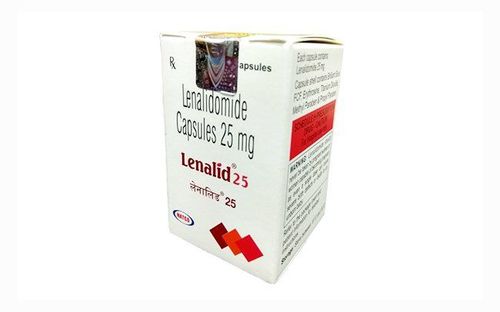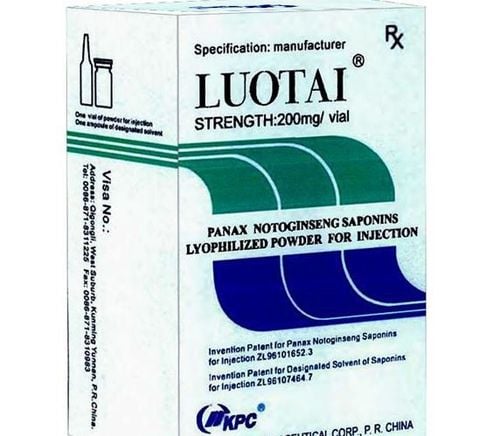This is an automatically translated article.
Fraxiparine 0.4ml is prepared in the form of an injection solution, with the main ingredient being Nadroparine Calcium. The drug is indicated for use in the treatment and prevention of thromboembolism (especially in general surgery, medical patients and orthopedic surgery).1. What is Fraxiparin?
Fraxiparine medicine 0.4ml has the main ingredient Nadroparine Calcium 3800 anti-Xa IU/0.4ml. The drug carries the full effect of the active ingredient Nadroparin (belonging to the Heparin group). Nadroparin is a fast anticoagulant with the mechanism of combining with Antithrombin III (an anticoagulant in the blood) to form a complex that enhances the effect of Antithrombin III up to 1000 times, giving a fast anticoagulant effect. Fraxiparine 0.4ml has little effect on platelets, does not inhibit thrombin, reduces the possibility of bleeding. In addition, the Nadroparin component also has anti-inflammatory, antihistamine, bradykinin, serotonin effects, reducing the risk of hypersensitivity, reducing Aldosteron secretion and releasing lipoprotein Lipase in tissues.
Indications for using Fraxiparine 0.4ml:
Prevention of thromboembolism; In orthopedic or general surgery: Preventing the formation of blood clots leading to embolism or in cases of respiratory failure, heart failure, respiratory infections that must be treated aggressively with the risk of clot formation. blood clotting; In hemodialysis: Using drugs to help prevent the formation of blood clots outside the body; Dissolve blood clots that have formed in deep veins; Treatment for people with abnormal angina attacks and non-Q wave myocardial infarction. Contraindications to using Fraxiparine 0.4ml:
People who are sensitive to Nadroparin, an excipient of the drug; People with a history of being affected by Nadroparin leading to thrombocytopenia bleeding; Patients with internal lesions such as peptic ulcer, acute infective endocarditis, cerebral hemorrhage.
2. How to use and dose Fraxiparine 0.4ml
How to use: Fraxiparine 0.4ml is made in the form of an injection, so patients should not self-inject at home but should go to the hospital to be cared for and injected by medical staff.
Dosage:
Preventing thrombosis: As prescribed by the doctor; Orthopedic surgery: Patients under 50kg: Before and 12 hours after surgery, inject the drug with a dose of 0.2ml. 3 days later, inject 1 dose of 0.2ml per day; from day 4, inject 1 dose of 0.3ml per day; Patients 50 - 60 kg: Before and 12 hours after surgery, inject the drug with a dose of 0.3ml. 3 days later, inject 1 dose of 0.3ml per day; from day 4, inject 1 dose of 0.4ml per day; Patients over 70kg: Before and 12 hours after surgery, inject the drug with a dose of 0.4ml. 3 days later, inject 1 dose of 0.4ml per day; from the 4th day, inject 1 dose of 0.6ml per day; General surgery: Usually: 2-4 hours before surgery, inject the drug with a dose of 0.3m. The following days, inject 1 dose of 0.3ml until the patient can walk, inject at least 7 days; High risk, must be treated actively: People over 70kg daily inject 1 dose of 0.6ml; people under 70kg per day inject 1 dose of 0.4ml; Hemodialysis: Inject drugs into an artery before starting dialysis. For people who are not at high risk of bleeding: Under 50kg, use a dose of 0.3m; 50 - 69kg dose 0.4ml; over 70kg use 0.6ml dose; For people at high risk of bleeding: Reduce dose by 1/2; Treatment of blood clots that have formed: Patients should take anticoagulants as soon as possible. Then inject Fraxiparine under the skin every 12 hours, about 10 days with a dose of 0.4ml for people under 50kg, 0.5ml for people 50 - 59kg, 0.6ml for people 60 - 69kg, 0.7ml for people over 70kg; Treatment of abnormal angina and non-Q-wave myocardial infarction: Initial dose intravenously, then subcutaneously every 12 hours. Should be used in combination with Aspirin for about 6 days with a dose of 0.4ml for people under 50kg, 0.5ml for people 50 - 59kg, 0.6ml for people 60 - 69kg, 0.7ml for people over 70kg; Patients with renal impairment: Dosage adjustment is required. Note: Because the drug is administered in a hospital, missed doses and overdoses are rare. Therefore, to ensure safety and avoid side effects, patients need to strictly follow the instructions of doctors and medical staff.
3. Side effects of the drug Fraxiparine 0.4ml
When using Fraxiparine 0.4ml, patients may experience some side effects such as:
Hemorrhage, thrombocytopenia, hematoma at the injection site, skin necrosis, hypersensitivity reactions; Hyperaldosteronism, hyperkalemia, transaminase elevations (usually reversible upon discontinuation of therapy). Side effects of Fraxiparine 0.4ml are rare, but patients still need to be careful while taking the drug. If you encounter any unusual signs, the patient should immediately notify the doctor for advice and appropriate remedial measures.
4. Be careful when using Fraxiparine 0.4ml
Some notes patients need to remember before and while taking Fraxiparine 0.4ml include:
When using Fraxiparine for patients with kidney failure, it is recommended to adjust the dose of the drug to suit the condition of the disease (reduce) dose in patients with severe renal impairment); Fraxiparine should be used with caution in people at risk of internal bleeding, in patients with high blood pressure, liver failure, renal failure, a history of peptic ulcer or damage to organs with a tendency to bleeding, and hematologic vascular disease. retina, new eye surgery, brain, spinal cord; For people with problems such as kidney failure, diabetes, taking hyperkalemia drugs (non-steroidal anti-inflammatory drugs, ACE inhibitors), ... leading to hyperkalemia, blood potassium levels should be monitored during treatment. Fraxiparin drug regimen; The risk of epidural hematoma is increased if an epidural catheter is inserted or used in combination with substances that affect hemostasis (platelet inhibitors, anticoagulants, nonsteroidal anti-inflammatory drugs). This risk is increased by trauma, lumbar puncture, repeated epidural puncture; Fraxiparine should not be used by pregnant and lactating mothers, only used when absolutely necessary, carefully considered by a doctor and clearly indicated.
5. Fraxiparin 0.4ml drug interactions
Some drug interactions of Fraxiparine 0.4ml include:
Fraxiparine can interact with non-steroidal anti-inflammatory drugs and Salicylates, Ticlopidine,... increasing the risk of bleeding. Therefore, the concomitant use of these drugs should be avoided. In cases where drug combination is required, careful clinical and biochemical monitoring is required; Caution when using Fraxiparine 0.4ml concurrently with anticoagulants, oral anticoagulants and corticosteroids. When oral anticoagulants are used in patients taking nadroparin, heparin should be continued until the INR is stable to target; The combination of Fraxiparine with other anticoagulants or antiplatelet agents will increase the bleeding effect; Concomitant use of Fraxiparine with Gentamicin, Cephaloridine, Colistin will lose the effect of Fraxiparine. In summary, Fraxiparine 0.4ml is prepared in the form of an injection solution, with the main ingredient being Nadroparine Calcium. The drug is indicated for use in the treatment and prevention of thromboembolism (especially in general surgery, medical patients and orthopedic surgery). When being prescribed by a doctor to use Fraxiparine 0.4ml, the patient should coordinate with all indications of the doctor. This reduces the risk of adverse side effects and improves patient outcomes.
Follow Vinmec International General Hospital website to get more health, nutrition and beauty information to protect the health of yourself and your loved ones in your family.
Please dial HOTLINE for more information or register for an appointment HERE. Download MyVinmec app to make appointments faster and to manage your bookings easily.













